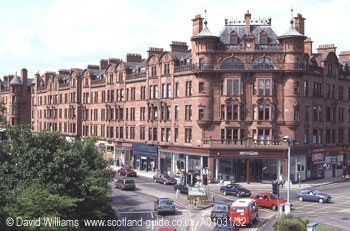At the same time as the city was expanding from its historic centre, the outlying districts (which later became independent burghs) grew in importance, some of the most notable being Partick, Springburn, Anderston, Govan and Gorbals. They grew rapidly as tens of thousands of people came to the city in search of work, and some of these important communities developed around specific industries such as railway locomotives (Springburn) and shipbuilding (Partick and Govan). In time, they were all annexed by the city, willingly or otherwise.
As the nineteenth century progressed there was a rapid expansion of large-scale industry, especially engineering, shipbuilding and chemicals, which meant that houses and factories coexisted side by side. Inevitably, this led to overcrowding and appalling social conditions and great swathes of the city centre, inevitably the oldest parts, became disgusting slums. Many of the original tenements had to be swept away by the City Improvement Trust and were replaced by new tenements, many of which still remain.
The survival of this second generation of tenements is testament to the superior building materials and techniques which were used, and in many ways it is the retention of these `new` buildings which has allowed a number of the city`s older districts to maintain their social cohesiveness in the face of the many economic changes which took place in the twentieth century. Indeed, a number of these tenement buildings, notably St George`s Mansions (see picture) (1900-1) near Charing Cross and McConnel`s Building (1906-7) on Hope Street, can be classed among the most important buildings in the city as they represent municipal determination to provide good quality housing.
This article is based on the guidebook "The Glasgow Guide".

The style of tenements built by the City Improvement Trust varied and these West End houses were some of the most elaborate. In this example they owe much to French style, not surprising because the trust had looked to the regeneration of Paris in their search for ideas in which to improve the city`s housing.